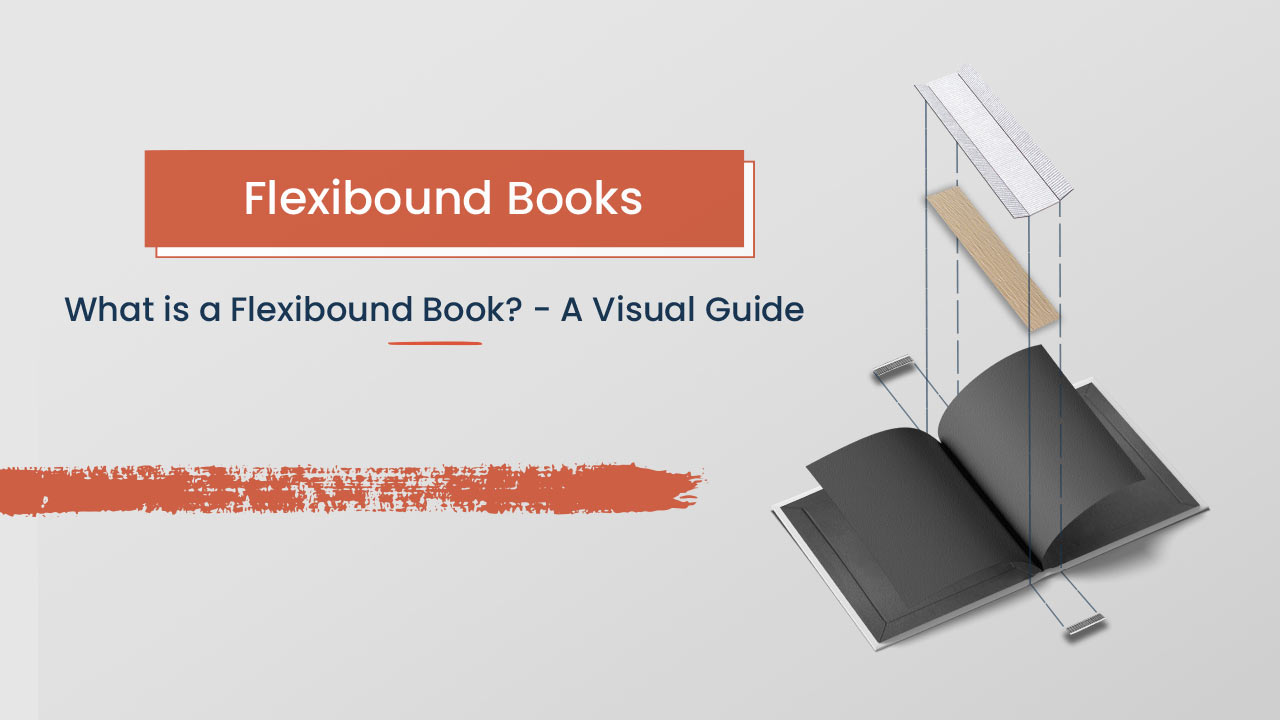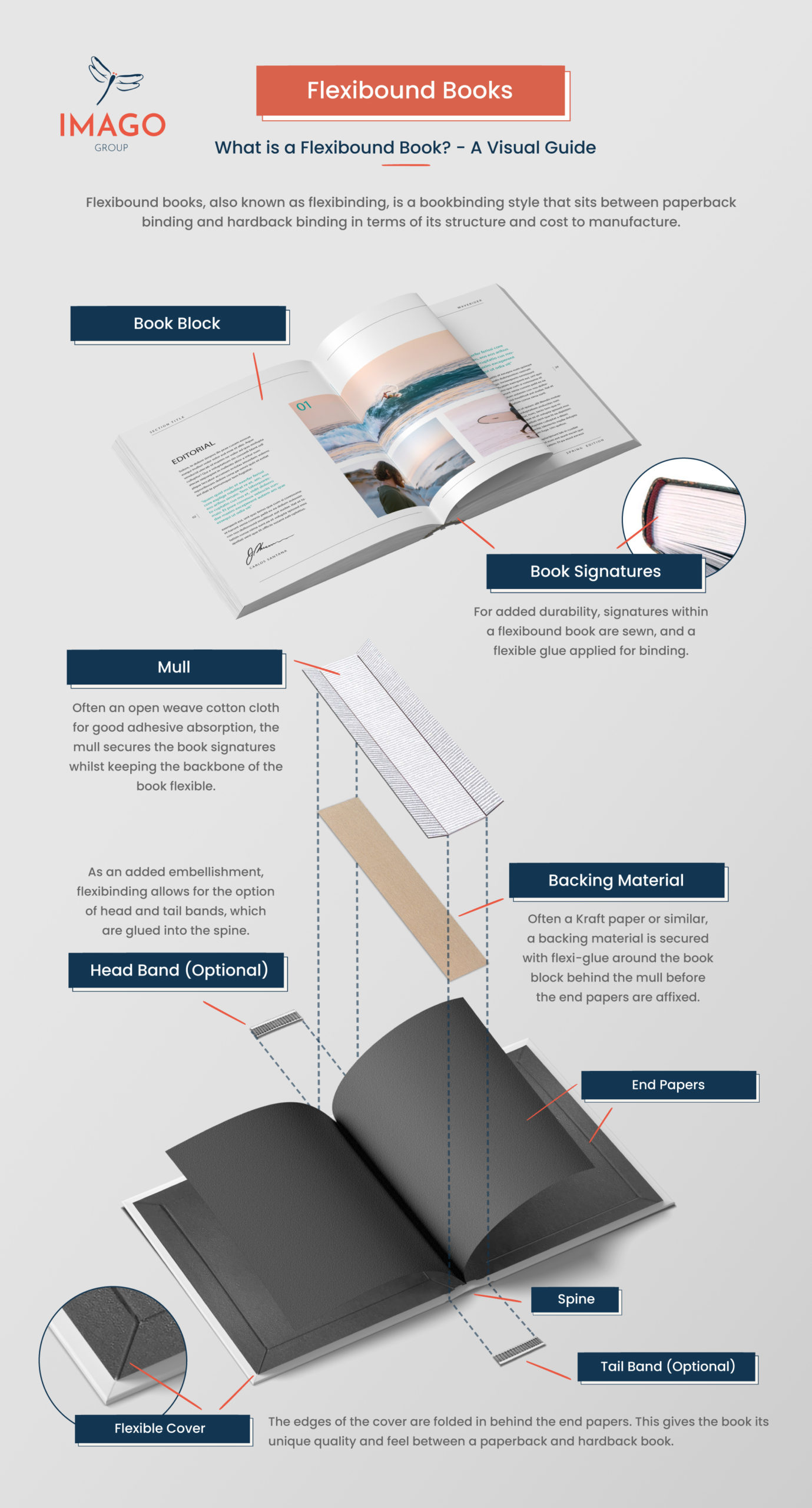What is a Flexibound Book? | A Visual Guide (Infographic)

What is a Flexibound Book?
We often get asked, “What is a Flexibound Book?” and “What are the differences between Flexibound Books and Paperback Books?”, because at first glance they share a visually similar flexible appearance, however, this is where most of the similarities end.
Closer to a Hardback/Cased Book?
In truth, flexibound books are closer in their binding style to a cased book (hardback book) than to a limp book (paperback book). The only difference being that flexibound book covers are made of flexible card stock, instead of a rigid binding board. Just like a cased book, the edges of the cover overhang the book block.
This means that whilst the two book styles are almost identical in their binding processes, a finished flexibound book remains lightweight with its flexible cover.
Understanding Flexibinding & Other Binding Styles
At Imago, we welcome questions from our clients such as “What is a Flexibound Book?”, because it means we are able to discuss in detail all of the options available for their project. It can bring up other questions around their project as we may be able to suggest alternative binding styles if they are more suitable, cost-effective, and easier to achieve.
What The Infographic Covers
We wanted to cover as much as possible about what flexibound books are and how they are made, so with this in mind, we’ve created an infographic that visualises the binding process, materials, and techniques involved in flexibinding.
Take a look at our infographic below for a quick, visual breakdown of the following topics:
- Book Signatures – How are they secured in the flexibinding process?
- Mull – What is a mull and why is it important to the binding process?
- Backing Material – What material is used between the signatures and mull?
- Head & Tail Bands – How are these are attached to the spine?
- Flexible Cover – How is this used in the binding process to create a strong, long-lasting, yet flexible product?
- A few pictures for good measure and as visual prompts!
We hope you like it!
It’s important to note that the flexibinding process and materials used can differ slightly depending on the printer and suppliers we use. The infographic we have created outlines one of the more common methods our suppliers use when creating flexibound books.
More Information
Of course, there is a lot more to read and understand when it comes to this subject, which we’ve covered in detail on our dedicated flexibound books page.
What is a Flexibound Book? Infographic

Share This: